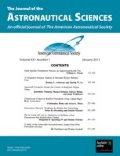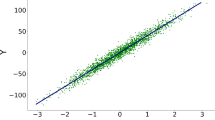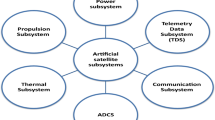Abstract
Two-line elements are widely used for space operations to predict orbits with a moderate accuracy for 2-3 days. Local optimization methods can estimate a TLE as long as there exists an initial estimate, whereas global optimization methods are computationally intensive, and estimating a large number of them is prohibitive. In this paper, the feasibility of predicting the initial estimates within the radius of convergence of the actual TLEs using machine learning methods is investigated. First, a Monte-Carlo approach to estimate a TLE, when there is no initial estimate that is within the radius of convergence of the actual TLE, is introduced. The proposed Monte-Carlo method is leveraged for demonstrating the behavior of the fitting error between the realistic trajectory and the trajectory propagated by SGP4 theory during the TLE estimation processes and evaluating the unbiased performance of the proposed machine learning models. Second, gradient boosting decision trees and fully-connected neural networks are trained to map the orbital evolution of space objects to the associated TLEs using 9.5 million publicly available TLEs from the US space catalog. The desired precision in the mapping to estimate a TLE is achieved for one of the three test cases, which is a low area-to-mass ratio space object.


















Similar content being viewed by others
Availability of data and material
On behalf of all authors, the corresponding author states that the data and materials may be shared with interested reader.
Code Availability
On behalf of all authors, the corresponding author states that the code may be shared with interested reader.
Notes
Available at http://www.space-track.com.
Available at https://github.com/dmlc/xgboost.
References
Hoots, R.R., Kelso, F.R.T.: Spacetrack report# 3, 1–3 (1980)
Vallado, D.A.: Fundamentals of Astrodynamics and Applications, 4th edn. Microcosm Press, Cleveland (2013)
Vallado, D., Crawford, P., Hujsak, R., Kelso, T.: Revisiting spacetrack report# 3, 6753 (2006)
Vallado, D., Crawford, P.: Sgp4 orbit determination. p 6770 (2008)
Jochim, E., Gill, E., Montenbruck, O., Kirschner, M.: Gps based onboard and onground orbit operations for small satellites. Acta Astronautica 39(9-12), 917 (1996)
Lee, B.: Norad tle conversion from osculating orbital element. J Astron Space Sci 19(4), 395 (2002)
Montenbruck, O., Gill, E.: Real-time estimation of sgp4 orbital elements from gps navigation data. pp 26–30 (2000)
Goh, S.T., Low, K.S.: Real-time estimation of satellite’s two-line elements via positioning data. pp 1–7 (2018)
Bolandi, H., Ashtari Larki, M., Sedighy, S., Zeighami, M., Esmailzadeh, M.: Estimation of simplified general perturbations model 4 orbital elements from global positioning system data by invasive weed optimization algorithm. Proc Inst Mechan Eng Part G: J Aerosp Eng 229(8), 1384 (2015)
Freund, Y., Schapire, R.E.: A decision-theoretic generalization of on-line learning and an application to boosting. J Comput Syst Sci 55(1), 119 (1997)
Kuhn, M., Johnson, K.: Applied Predictive Modeling, vol. 26. Springer, New York (2013)
Friedman, J.H.: Greedy function approximation: A gradient boosting machine. Annals Stat 1189–1232 (2001)
Friedman, J.H.: Stochastic gradient boosting. Comput Stat Data Anal 38(4), 367 (2002)
Chen, T., Guestrin, C.: Xgboost: A scalable tree boosting system. 785–794 (2016)
Cybenko, G.: Approximation by superpositions of a sigmoidal function. Math Cont Signals Syst 2(4), 303 (1989)
Hornik, K., Stinchcombe, M., White, H.: Multilayer feedforward networks are universal approximators. Neural Netw 2(5), 359 (1989)
Goodfellow, I., Bengio, Y., Courville, A: Deep Learning. MIT press, Cambridge (2016)
Maisonobe, L., Pommier, V., Parraud, P.: Orekit: An open-source library for operational flight dynamics applications. 3–6 (2010)
Broucke, R., Cefola, P.: On the equinoctial orbit elements. 303–310 (1972)
Kingma, D.P., Ba, J.: Adam: A method for stochastic optimization (2015)
Author information
Authors and Affiliations
Corresponding author
Ethics declarations
Declarations
Conflict of Interests
On behalf of all authors, the corresponding author states that there is no conflict of interest.
Additional information
Publisher’s Note
Springer Nature remains neutral with regard to jurisdictional claims in published maps and institutional affiliations.
Rights and permissions
About this article
Cite this article
Abay, R., Balage, S., Brown, M. et al. Two-Line Element Estimation Using Machine Learning. J Astronaut Sci 68, 273–299 (2021). https://doi.org/10.1007/s40295-021-00249-0
Accepted:
Published:
Issue Date:
DOI: https://doi.org/10.1007/s40295-021-00249-0




